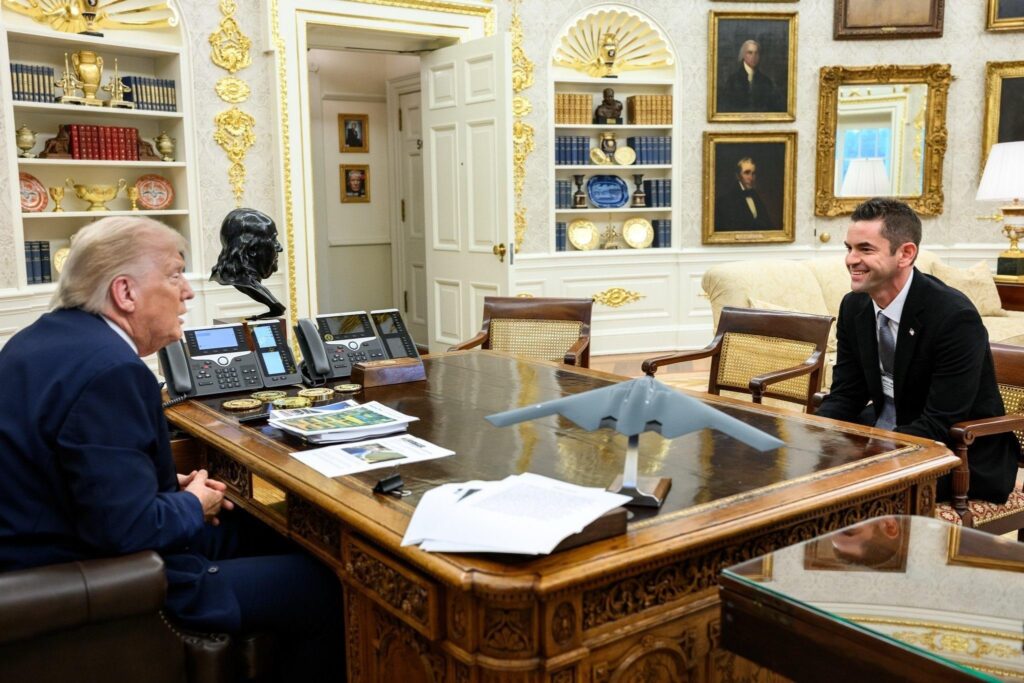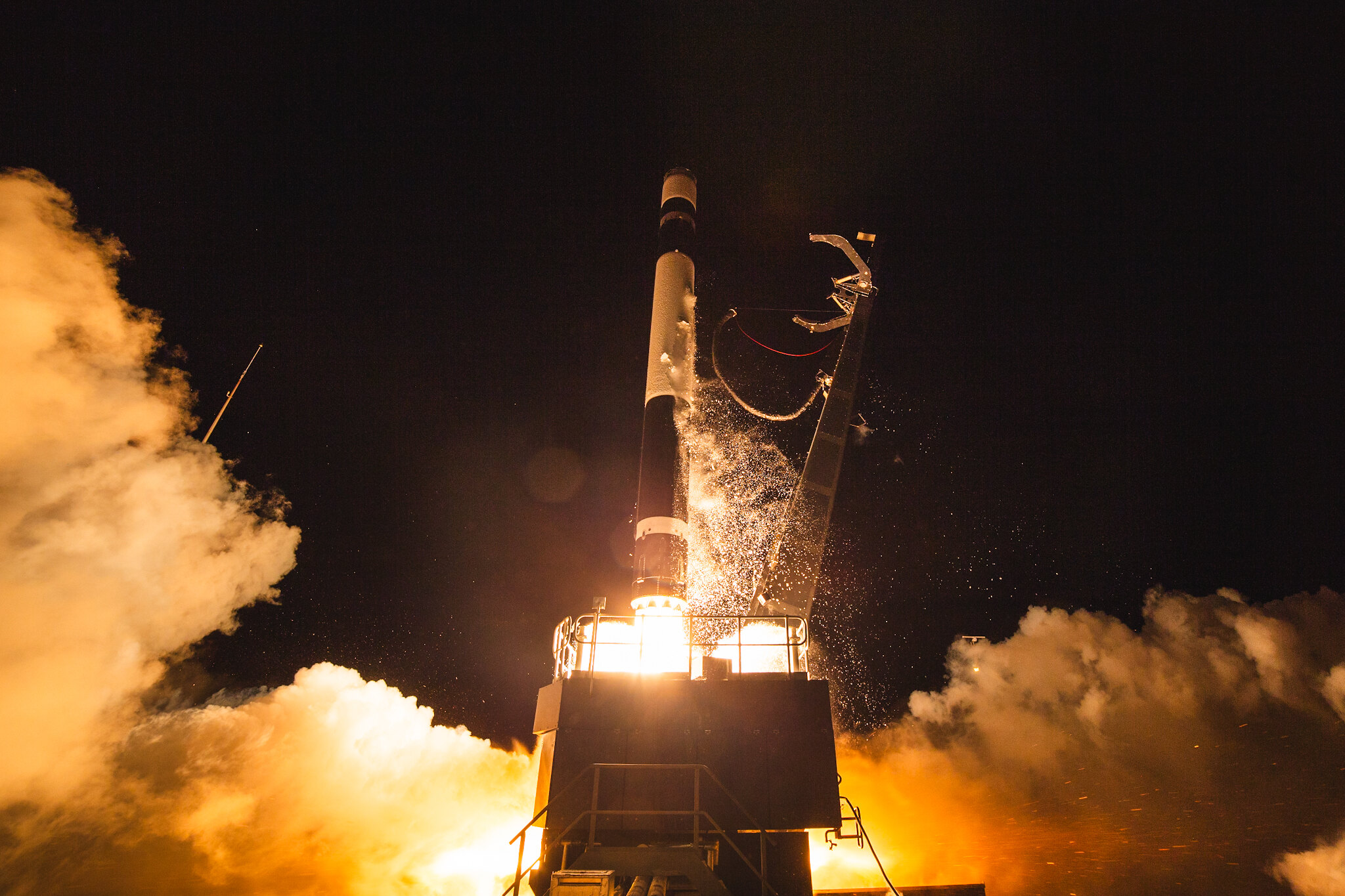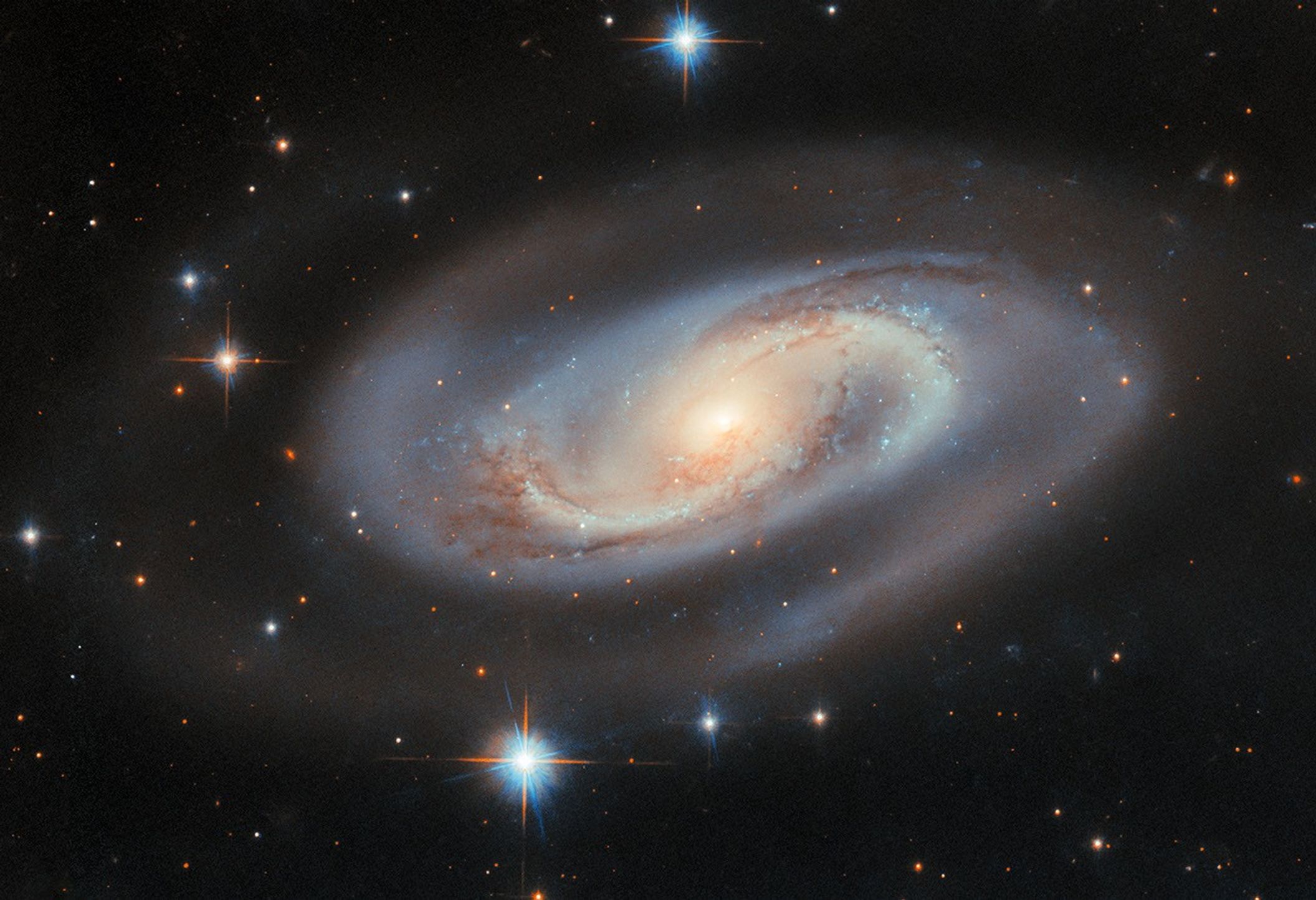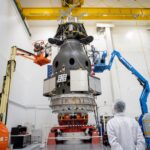Now Reading: All eyes on the moon: sharing information for lunar peace, safety and sustainability
-
01
All eyes on the moon: sharing information for lunar peace, safety and sustainability
All eyes on the moon: sharing information for lunar peace, safety and sustainability

We live in a brand new era for lunar activities. With over 100 payloads from around the globe planned to visit the Moon by 2030, our closest natural satellite will soon see a flurry of activity like never before. And that presents a problem: If operators don’t know enough information about each other’s missions, many of them can literally run into each other, damaging spacecraft and interfering with critical operations. Uncomfortably close passes between lunar orbiters are common already.
While the Outer Space Treaty (OST) provides vital foundations for tackling this global issue, the principles it first laid out in 1967 need to be further refined to produce rules that we can apply in the specific context of lunar activities to guarantee safety and sustainability for the benefit of everyone.
Without actors sharing reliable information on lunar activities, and such information being made accessible to all relevant stakeholders, Moon missions will face more and more critical threats to safety — which may even end up escalating to conflicts.
Different States share different information at different times, in different formats and through different channels. In turn, the information shared is dispersed and not especially useful or efficient for safety and sustainability.
Due to these needs, risks and challenges, finding a way to effectively share information on lunar activities became a priority topic in multilateral fora like the United Nations’ Committee on the Peaceful Uses of Outer Space (COPUOS) as well as in international frameworks like the Artemis Accords and the International Lunar Research Station (ILRS).
It’s in this context that we at the Lunar Policy Platform Foundation, with funding from the Open Lunar Foundation and in synergy with ongoing efforts at COPUOS, spent five months conducting bilateral consultations with over 70 representatives from 35 governments, space agencies and companies, as well as independent experts, to understand converging and diverging views on how, when and where to share lunar mission information.
The initial results of these consultations have been transposed in a Lunar Information Sharing 101 document, which is currently being circulated with stakeholders for feedback before its public release. Below are the core recommendations and their driving principles.

Purposes of lunar information sharing
Safety: Knowing the location and duration of lunar missions as well as how they will be conducted and by whom is essential to avoid harmful interference, especially in the unknown, hostile and hazardous lunar environment. Paying due regard to the corresponding interests of others is a core principle of Article IX of the Outer Space Treaty, which reads “In the exploration and use of outer space, including the moon and other celestial bodies, States Parties to the Treaty shall be guided by the principle of cooperation and mutual assistance and shall conduct all their activities in outer space, including the moon and other celestial bodies, with due regard to the corresponding interests of all other States Parties to the Treaty.”
But implementing it on the moon will be easier said than done, primarily because of three reasons:
- We lack comprehensive knowledge of the lunar environment to accurately predict the potentially harmful impact of our operations.
- The technical complexities and high costs of lunar missions make it difficult to incorporate potential adjustments that may be needed for due regard.
- We simply do not know what the interests of others are, due to the above mentioned issues currently affecting information sharing.
Peace: Sharing information on the nature and purposes of lunar activities helps build trust and reduces the potential for misinterpretations and misunderstandings, particularly in the current geopolitical climate — and given the limited tracking capabilities that exist for lunar activities. It also extends the spirit of the Registration Convention, which requires countries to provide basic information about objects launched to space and has helped build trust since the Cold War. While the Registration Convention and its Registry maintained by UNOOSA continue to remain a cornerstone, we face increasing challenges with getting sufficient levels of information from the registry, especially as global space activity compounds. These challenges are even more acute in the context of lunar activities, considering that the Registration Convention has been designed primarily for activities in Earth’s orbit.
Sustainability: Accessing information on lunar activities will foster cooperation between stakeholders, enable interoperability between missions and overall increase our ability to use the Moon in an efficient and sustainable way. For instance, India’s space agency ISRO shared its Chandrayaan 2 orbiter datasets which, among other things, helped Japan’s JAXA accomplish its goal of a precision Moon landing with the SLIM spacecraft. As noted in LPP’s 2024 Lunar Policy Snapshot, last year alone saw half a dozen international developments specifically related to lunar policy, highlighting the global need for more structured communications between lunar missions, planned and ongoing.
Capacity building: Sharing data and knowledge derived from lunar activities can help to ensure that all actors can benefit from them in multiple ways. Sharing scientific data about the Moon and its varying geology and environment plays a key role in answering fundamental questions about the origin and evolution of the Moon and Earth, which in itself is tied to the history of the Solar System. The recent case of international researchers getting access to far side lunar samples from China’s Chang’e 6 mission is a great demonstration of these benefits of data sharing. Being aware of both current and planned missions can also be beneficial to companies, allowing them to identify potential customers and partners and thus furthering the development of a sustainable lunar economy.
Overview of information sharing practices
Traditionally, information about space activities is shared by States. This is consistent with the current legal framework, according to which States agree to share information on the nature, conduct, locations and results of their space activities. In this regard, Article XI of the OST, states that “In order to promote international co-operation in the peaceful exploration and use of outer space, States Parties to the Treaty conducting activities in outer space, including the moon and other celestial bodies, agree to inform the Secretary-General of the United Nations as well as the public and the international scientific community, to the greatest extent feasible and practicable, of the nature, conduct, locations and results of such activities.” This is usually done through press releases, online posting, conferences and scientific articles, as well as statements, papers and technical presentations at the annual sessions of COPUOS.
Only a limited number of States have been sharing information on their space activities directly with the U.N. Secretary General under Article XI. The most frequent contributors to the Index are the United States, the United Kingdom and The Netherlands, followed by Russia, China and, most recently, Luxembourg and Japan. Information shared in this way is normally included in a note verbale, a diplomatic document sent by a State’s mission to the UN. Such note verbales are then displayed in an “Index of submissions” listing the relevant PDFs, which is maintained by the UN Office for Outer Space Affairs (UNOOSA).
In conclusion, there is minimum information shared about lunar activities, and this information is inherently dispersed across a variety of uncoordinated channels. This fragmented approach has also prevented the space community from gathering information in a single reliable, globally accessible platform.
The need for new practices
- What to share
At minimum, information on lunar activities should include a list of planned activities, who is going to conduct them, their purposes, where will they happen, how long will they last and what is going to be left behind at their conclusion. Additional information useful for cooperation and capacity building may include technical data on relevant systems and equipment, scientific results and lessons learned.
- Where to share
In the absence of a centralized repository able to accommodate all actors and purposes, at minimum actors should identify preferred channels for where to share information. Based upon the available options and preferences of stakeholders, these three channels could be notification of activities under Article XI OST, registration of space objects under the Registration Convention and online publication in dedicated sections of lunar operators’ websites.
- How to share (and display)
Adopting a common template would simplify both sharing and reading information about lunar activities, benefiting providers and users alike. Between 2020 and 2022, The Article XI Project led by Dr. Antonino Salmeri and Prof. Mark Sundahl, initiated global informal discussions on the need for such a template, raising awareness and proposing initial suggestions on how to design and structure it. In 2022, the Working Group on the Five United Nations Treaties within the Legal Subcommittee of COPUOS decided to address the implementation of Article XI OST under a five year plan. This year, the Working Group made excellent progress on the topic and even began to consider first ideas for a template.
Having lunar information displayed in dedicated databases would allow actors to easily develop a comprehensive understanding of lunar activities past, present and future. Considering different actors and requirements, information about lunar activities could be displayed in two complementary resources: a Lunar Registry and a Lunar Database.
- A Lunar Registry maintained by UNOOSA could feature public information for the purposes of transparency and capacity building. Such a registry could be established by redesigning the existing online index for Article XI submissions.
- A Lunar Database maintained by a neutral technical entity could host private operational information for the purposes of safety and sustainability. Such a database is currently being developed by the Open Lunar Foundation via its Lunar Ledger project.
- When to share
Given the sensitivities and complexities involved in lunar activities, it would be useful to follow an incremental approach with milestones preceding and following the activity. Below is an initial outline based on common understanding identified by LPP that actors can further tailor based on the needs and challenges faced in their lunar operations.
One year prior to launch, actors could share a list of the activities with related points of contact, coupled with their purpose(s), location and duration. Six months prior, actors could add relevant information on end of life (including any debris and disposal plans), as well as main hazards and cautions. A month prior, actors could add information on humans, objects and equipment involved in the activity. On the announcement of a launch date, they could share trajectory information to avoid interference.
During the mission, actors could share live updates on its status and progress. One month after the activity has concluded, actors could publish a first report with an initial overview of results. Six months to a year later, actors would publish a final report including the dissemination of relevant scientific findings and lessons learned.
- What next?
Once information is shared and displayed following these practices, what next? This is precisely the question being addressed by the UN’s Action Team on Lunar Activities Consultations (ATLAC). This Action Team was established by COPUOS in 2024 to have focused, expert-level exchanges to develop recommendations aimed at improving consultations related to lunar activities. During its discussions, ATLAC is mandated to consider different options, including, for instance, whether to recommend the establishment of an international mechanism, aiming to produce a final report by 2027.
Based on the progress of its work, ATLAC may present diverse proposals for consideration by the committee and further complement them with priority topics relevant to its mandate that could subsequently be addressed by any proposed international mechanism. In 2025, ATLAC appointed its co-chairs and prepared its multi-year workplan for endorsement by COPUOS in June. Upon this high level endorsement, the Action Team will begin its substantive work leveraging the intersessional period.
Information sharing is a precondition for focused, informed and effective consultations. As such, we hope that the discussion brought forth by the Lunar Information Sharing 101 initiative can benefit the crucial work of ATLAC. Today we have a unique window of opportunity to provide solid foundations that can steer the future of lunar activities towards a prosperous direction for the benefit of all humanity. But we have to act now.
Antonino Salmeri is a space lawyer specialized in the governance of lunar and space resource activities, currently working as Director of the Lunar Policy Platform (LPP). Salmeri holds four advanced degrees in law and is the author of leading international publications in the field of space law and policy. Through his work at LPP, Salmeri leads the development of impactful policy documents promoting the peaceful, safe, and sustainable conduct of lunar activities, and advises governments, companies and scientists on the strategic, legal and policy aspects of their lunar endeavors.
Samuel Jardine is a geopolitical consultant, with expertise in strategic competition, governance and geopolitical risk in space, the polar regions and the seabed. Currently, Sam is the Policy Specialist at the Lunar Policy Platform and is Head of Research at London Politica, Senior Advisor at Luminint, and a Research Associate for Oxford University and CHACR’s Climate Change & (In)Security Project. He is also a Research Fellow with the Open Lunar Foundation and a Research Affiliate with the Centre for Space Governance. Sam holds an MA in Modern History from King’s College London and a BA in History from the Open University and was a RUSI Military Sciences “Rising Stars” mentee.
SpaceNews is committed to publishing our community’s diverse perspectives. Whether you’re an academic, executive, engineer or even just a concerned citizen of the cosmos, send your arguments and viewpoints to opinion@spacenews.com to be considered for publication online or in our next magazine. The perspectives shared in these op-eds are solely those of the authors.
Stay Informed With the Latest & Most Important News
Previous Post
Next Post
Previous Post
Next Post
-
 012024 in Review: Highlights from NASA in Silicon Valley
012024 in Review: Highlights from NASA in Silicon Valley -
 02Panasonic Leica Summilux DG 15mm f/1.7 ASPH review
02Panasonic Leica Summilux DG 15mm f/1.7 ASPH review -
 03From Polymerization-Enabled Folding and Assembly to Chemical Evolution: Key Processes for Emergence of Functional Polymers in the Origin of Life
03From Polymerization-Enabled Folding and Assembly to Chemical Evolution: Key Processes for Emergence of Functional Polymers in the Origin of Life -
 04How New NASA, India Earth Satellite NISAR Will See Earth
04How New NASA, India Earth Satellite NISAR Will See Earth -
 05And Thus Begins A New Year For Life On Earth
05And Thus Begins A New Year For Life On Earth -
 06Astronomy Activation Ambassadors: A New Era
06Astronomy Activation Ambassadors: A New Era -
07SpaceX launch surge helps set new global launch record in 2024




















